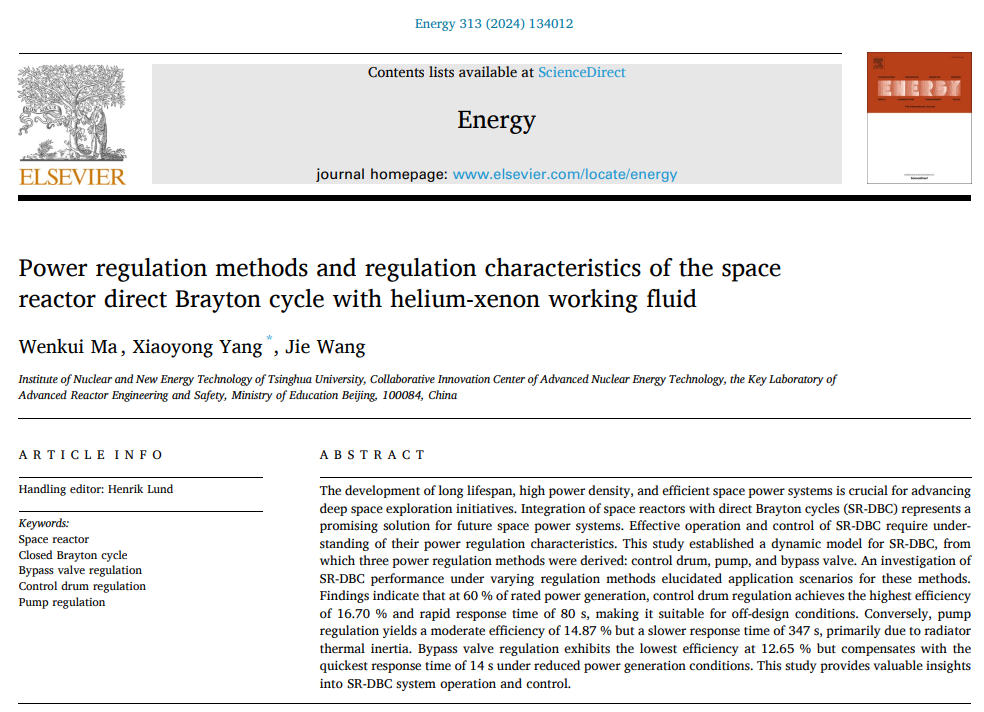INET researchers have theoretically developed three distinct power regulation methods for the SR-BC. Additionally, they have delineated the optimal application scenarios for each method.
Ma Wenkui | INET news
December 27, 2024
Future planetary bases, deep space exploration, orbital propulsion, and other space exploration technologies are important indicators of a society's technological level. Efficient and compact space power systems are key to advancing space exploration technologies. Space reactors offer advantages such as long lifespan, high power density, flexible regulation, and insensitivity to light and radiation. Closed Brayton cycles have a low specific mass and high power output, efficiently converting the fission energy of the reactor into electricity, making them an ideal energy conversion technology for space reactors. Consequently, space reactors coupled with Brayton cycles (SR-BC) are preferred for megawatt-scale space power systems. The SR-BC operates autonomously in an islanded mode in space, unaffected by terrestrial grid-lock control, and thus requires effective power regulation to accommodate frequent load variations during spacecraft operations such as startup, transfer, and deceleration.
To ensure the safe and stable operation of the SR-BC in space-island environments and to effectively respond to the dynamic load variation requirements of spacecraft electrical systems, researchers from the Division of Helium Turbine Technology have theoretically developed three distinct power regulation methods for the SR-BC. Additionally, they have delineated the optimal application scenarios for each method. These findings offer significant insights into the operation and control of SR-BC systems and have been published in the latest issue of Energy.
Title and abstract of the paper

This study, based on the fundamental principles of multi-physical processes in SR-BC, developed a system thermo-hydraulic model and proposed three power regulation methods—control drum, pump, and bypass valve—from a theoretical perspective. By investigating the performance of SR-BC under different regulation methods, the study clarified the application scenarios for these methods. The results indicate that, during power regulation, control drum regulation achieves the highest cycle efficiency and the faster response, making it the optimal power regulation method for the system. Pump regulation yields a higher efficiency but is affected by the thermal inertia of the radiator, resulting in the slowest response time. Bypass valve regulation, while exhibiting the lowest cycle efficiency, offers the fastest response and is suitable for scenarios requiring rapid power adjustment. This study provides valuable insights into the operation and control of space nuclear power system.

Link to access the full paper:
https://www.sciencedirect.com/science/article/pii/S0360544224037903